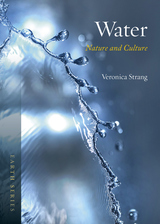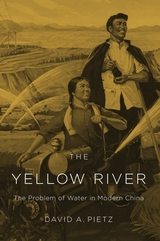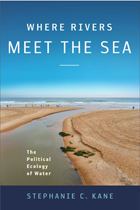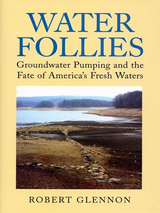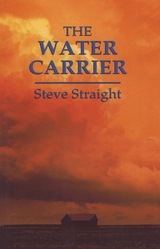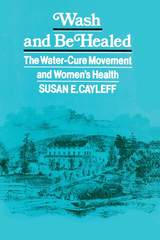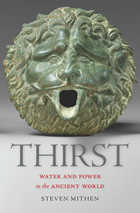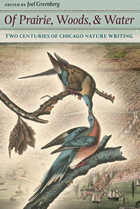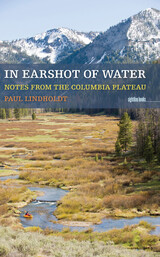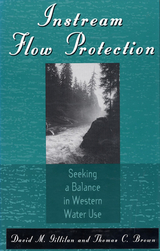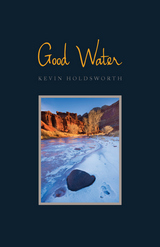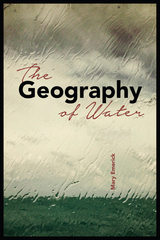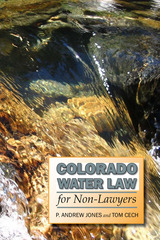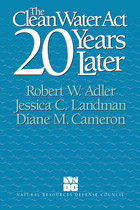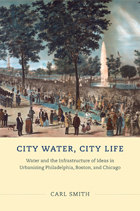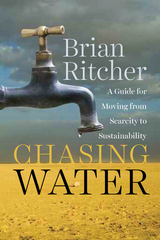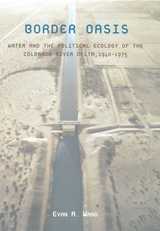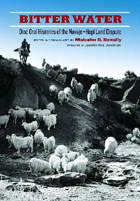Books About WaterCollection by Cassandra Verhaegen (18 items)When you're thirsty for knowledge.. Includes the following tags:
Balance, City and town life, Colorado, Colorado River (Colo.-Mexico), Columbia Plateau, Culture, Economic development, Emerick, Mary, Fate, Fiction, Geography, Government, Health and hygiene, Homes and haunts, International cooperation, Land tenure, Natural Resources, Nature, New England, Northwest, Pacific, Notes, Poetry, Political Ecology, Regulation, Rivers, Sea, Seeking, Straight, Steve, Strang, Veronica, Sustainability, Texts, Urbanization, Water, Water quality management, Water resources development, Water supply, Water use, Water-supply
See More
|
Water
by Veronica Strang
Reaktion Books, 2015
As any scientist will tell you, there is no substance more vital than water. Our history is necessarily a history with water, whether we have irrigated our fields with it, cooled our machines, washed ourselves, drank it down deeply, or even worshipped it. In Water, Veronic Strang ladles through the rich history of our interaction with water, offering an accessible examination of the crucial properties that make water so unique alongside the complex story of our evolving relationship with it. As Strang shows, our attitudes about water and the things that we rely on it for have changed dramatically over time. Once a mystical source of regenerative powers, it has since played various roles as our attitudes about hygiene, health, and disease have developed; as it has become useful to our industry; as agriculture has become ever more complex; and, of course, as we have learned to make money from it. Today water—who controls it, and how—is one of the largest issues facing our society, influencing everything from the welfare of the billions of people living on earth to the vitality of its natural habitats. Balancing history, science, and environmental and cultural studies, Strang offers an important, multi-faceted view of a critical resource.
1
|
The Yellow River
by David A. Pietz
Harvard University Press, 2015
Flowing through the heart of the North China Plain—home to 200 million people—the Yellow River sustains one of China’s core regions. Yet this vital water supply has become highly vulnerable in recent decades, with potentially serious repercussions for China’s economic, social, and political stability. The Yellow River is an investigative expedition to the source of China’s contemporary water crisis, mapping the confluence of forces that have shaped the predicament that the world’s most populous nation now faces in managing its water reserves.
2
|
Where Rivers Meet the Sea
by Stephanie Kane
Temple University Press, 2012
Where fresh water appears to be abundant and generally accessible, chronic pollution may be relatively ignored as a public issue. Yet there are those whose lives, livelihoods, and traditions are touched directly by the destructive albeit essential relationship between humans and water. In her passionate and persuasively argued Where Rivers Meet the Sea, Stephanie Kane compares two cities and nations—Salvador, Brazil and Buenos Aires, Argentina—as she tells the stories of those who organize in the streets, petition the courts, and challenge their governments to implement and enforce existing laws designed to protect springs, lakes, harbors, and rivers. Illuminating the complex and distinctive cultural forces in the South Atlantic that shape conflicts and collaborations pertaining to particular waterfront settings, Kane shows the dilemmas, inventiveness, and persistence that provide the foundation for environmental and social justice movements writ large.
3
|
Water Follies
by Robert Jerome Glennon
Island Press, 2002
The Santa Cruz River that once flowed through Tucson, Arizona is today a sad mirage of a river. Except for brief periods following heavy rainfall, it is bone dry. The cottonwood and willow trees that once lined its banks have died, and the profusion of birds and wildlife recorded by early settlers are nowhere to be seen. The river is dead. What happened? Where did the water go. As Robert Glennon explains in Water Follies, what killed the Santa Cruz River -- and could devastate other surface waters across the United States -- was groundwater pumping. From 1940 to 2000, the volume of water drawn annually from underground aquifers in Tucson jumped more than six-fold, from 50,000 to 330,000 acre-feet per year. And Tucson is hardly an exception -- similar increases in groundwater pumping have occurred across the country and around the world. In a striking collection of stories that bring to life the human and natural consequences of our growing national thirst, Robert Glennon provides an occasionally wry and always fascinating account of groundwater pumping and the environmental problems it causes. Robert Glennon sketches the culture of water use in the United States, explaining how and why we are growing increasingly reliant on groundwater. He uses the examples of the Santa Cruz and San Pedro rivers in Arizona to illustrate the science of hydrology and the legal aspects of water use and conflicts. Following that, he offers a dozen stories -- ranging from Down East Maine to San Antonio's River Walk to Atlanta's burgeoning suburbs -- that clearly illustrate the array of problems caused by groundwater pumping. Each episode poses a conflict of values that reveals the complexity of how and why we use water. These poignant and sometimes perverse tales tell of human foibles including greed, stubbornness, and, especially, the unlimited human capacity to ignore reality. As Robert Glennon explores the folly of our actions and the laws governing them, he suggests common-sense legal and policy reforms that could help avert potentially catastrophic future effects. Water Follies, the first book to focus on the impact of groundwater pumping on the environment, brings this widespread but underappreciated problem to the attention of citizens and communities across America.
4
|
The Water Carrier
by Steve Straight
Northwestern University Press, 2002
Steve Straight's skillfully crafted poems cover a wide range of topics—love, marriage, family, work, and class issues. Not since E. A. Robinson has anyone captured the essence of the New England town with such keen observation. What gives this volume its distinctive voice is a Buddhist calm, tinged with irony and humor. Steve Straight touches the ordinary things of life with a magical whimsy and a delightful self-deprecating humor.
5
|
Wash and Be Healed
by Susan Cayleff
Temple University Press, 1991
In a century characterized by dramatic health-care remedies—bloodletting, purging, and leeching, for example—hydropathy was one of the most celebrated alternative forms of medical care. Unlike these other cures, however, hydropathy, which entailed various applications of cold water, also staunchly advocated the reformation of such personal habits as diet, exercise, dress, and way of life. Susan E. Cayleff explores the relationship between this fascinating sect of nineteenth-century medicine and the women who took the cure.
6
|
Thirst
by Steven Mithen
Harvard University Press, 2012
Water is an endangered resource, imperiled by population growth, mega-urbanization, and climate change. Scientists project that by 2050, freshwater shortages will affect 75 percent of the global population. Steven Mithen puts our current crisis in historical context by exploring 10,000 years of humankind’s management of water. Thirst offers cautionary tales of civilizations defeated by the challenges of water control, as well as inspirational stories about how technological ingenuity has sustained communities in hostile environments.
7
|
Of Prairie, Woods, and Water
edited by Joel Greenberg
University of Chicago Press, 2008
In the literary imagination, Chicago evokes images of industry and unbridled urban growth. But the tallgrass prairie and deep forests that once made up Chicago’s landscape also inspired musings from residents and visitors alike. In Of Prairie, Woods, and Water, naturalist Joel Greenberg gathers these unique voices from the land to present an unexpected portrait of Chicago in this often charming, sometimes heart-wrenching anthology of nature writing.
These writings tell the tale of a land in transition—one with abundant, unique, and incredibly lush flora and fauna, a natural history quite elusive today. Drawing on archives he uncovered while writing his acclaimed A Natural History of the Chicago Region, Greenberg hand-selected these first-person narratives, all written between 1721 and 1959. Not every author is familiar, but every contribution is distinctive. From a pioneer’s hilarious notes on life in the Kankakee marsh to Theodore Drieser’s poignant plea for conservation of the Tippecanoe River to infamous murderer Nathan Leopold’s charming description of a pet robin he kept in prison, the sources included are as diverse as the nature they describe. The excerpts conclude with insightful biographical essays and traverse a wide area of greater Chicagoland, from the Illinois River to southwest Michigan, from southern Wisconsin to the Limberlost swamp of northeastern Indiana. A fascinating record of Chicago’s changing environmental history, Of Prairie, Woods, and Water captures the natural world in a way that will inspire its continued conservation.
Errata: We have learned the title of a book by the Chicago ecologist and writer May Theilgaard Watts has been incorrectly rendered in the selections attributed to Mrs. Watts. The correct title of her book is Reading the Landscape of America (Nature Study Guild Publishers, see http://naturestudy.com). This will be corrected in the next printing. We very much regret the error.
8
|
In Earshot of Water
by Paul Lindholdt
University of Iowa Press, 2011
Whether the subject is the plants that grow there, the animals that live there, the rivers that run there, or the people he has known there, Paul Lindholdt’s In Earshot of Water illuminates the Pacific Northwest in vivid detail. Lindholdt writes with the precision of a naturalist, the critical eye of an ecologist, the affection of an apologist, and the self-revelation and self-awareness of a personal essayist in the manner of Annie Dillard, Loren Eiseley, Derrick Jensen, John McPhee, Robert Michael Pyle, and Kathleen Dean Moore.
Exploring both the literal and literary sense of place, with particular emphasis on environmental issues and politics in the far Northwest, Lindholdt weds passages from the journals of Lewis and Clark, the log of Captain James Cook, the novelized memoir of Theodore Winthrop, and Bureau of Reclamation records growing from the paintings that the agency commissioned to publicize its dams in the 1960s and 1970s, to tell ecological and personal histories of the region he knows and loves.
In Lindholdt’s beautiful prose, America’s environmental legacies—those inherited from his blood relatives as well as those from the influences of mass culture—and illuminations of the hazards of neglecting nature’s warning signs blur and merge and reemerge in new forms. Themes of fathers and sons layer the book, as well—the narrator as father and as son—interwoven with a call to responsible social activism with appeals to reason and emotion. Like water itself, In Earshot of Water cascades across boundaries and blends genres, at once learned and literary.
9
|
Instream Flow Protection
by David M. Gillilan and Thomas C. Brown
Island Press, 1997
Instream Flow Protection is a comprehensive overview of Western water use and the issues that surround it. The authors explain instream flow and its historical, political, and legal context; describe current instream flow laws and policies; and present methods of protecting instream flow. They provide numerous examples to illustrate their discussions, with case studies of major river systems including the Bitterroot, Clark's Fork, Colorado, Columbia, Mimbres, Mono Lake, Platte, Snake, and Wind. Policymakers, land and water managers at local, state, and federal levels, attorneys, students and researchers of water issues, and anyone concerned with instream flow protection will find the book enormously valuable.
10
|
Good Water
by Kevin Holdsworth
University Press of Colorado, 2016
In essays that combine memoir with biography of place, Kevin Holdsworth creates a public history of the land he calls home: Good Water, Utah. The high desert of south-central Utah is at the heart of the stories he tells here—about the people, the “survivors and casualties” of the small, remote town—and is at the heart of his own story.
11
|
The Geography of Water
by Mary Emerick
University of Alaska Press, 2015
In this exquisite debut novel, Mary Emerick takes readers into the watery landscape of southeast Alaska and the depths of a family in crisis. An abusive father and a broken home forces a teenage Winnie to seek the safety of a neighboring bay and a pair of unlikely father figures. Years later her mother goes missing, and Winnie returns to the hunting and fishing lodge she grew up in to find the world she knew gone. Her once-powerful father disfigured by a bear attack. Her childhood hero revealed as merely human. And her mother’s story rewritten by a stray note. As Winnie uses the help of friends to sort out the details of her mother’s final exodus, she finds herself pulled into a murky swirl of family secrets and devastating revelations. As the search heads higher into the mountains, Winnie must learn to depend on her own strength in order to reach the one she loves.
12
|
Colorado Water Law for Non-Lawyers
by P. Andrew Jones and Tom Cech
University Press of Colorado, 2009
Why do people fight about water rights? Who decides how much water can be used by a city or irrigator? Does the federal government get involved in state water issues? Why is water in Colorado so controversial? These questions, and others like them, are addressed in Colorado Water Law for Non-Lawyers. This concise and understandable treatment of the complex web of Colorado water laws is the first book of its kind. Legal issues related to water rights in Colorado first surfaced during the gold mining era in the 1800s and continue to be contentious today with the explosive population growth of the twenty-first century. Drawing on geography and history, the authors explore the flashpoints and water wars that have shaped Colorado’s present system of water allocation and management. They also address how this system, developed in the mid-1800s, is standing up to current tests—including the drought of the past decade and the competing interests for scarce water resources—and predict how it will stand up to new demands in the future.
This book will appeal to at students, non-lawyers involved with water issues, and general readers interested in Colorado’s complex water rights law.
13
|
The Clean Water Act 20 Years Later
by Robert W. Adler, Jessica C. Landman and Diane M. Cameron
Island Press, 1993
This volume explores the issues associated with the complex subject of water quality protection in an assessment of the successes and failures of the Clean Water Act over the past twenty years. In addition to examining traditional indicators of water quality, the authors consider how health concerns of the public have been addressed, and present a detailed examination of the ecological health of our waters. Taken together, these measures present a far more complete and balanced picture than raw water quality data alone. As well as reviewing past effectiveness, the book includes specific recommendations for the reauthorization of the Act, which is to be considered by Congress in 1995. This balanced and insightful account will surely shape the debate among legislative and policy experts and citizen activists at all levels who are concerned with issues of water quality.
14
|
City Water, City Life
by Carl Smith
University of Chicago Press, 2013
A city is more than a massing of citizens, a layout of buildings and streets, or an arrangement of political, economic, and social institutions. It is also an infrastructure of ideas that are a support for the beliefs, values, and aspirations of the people who created the city. In City Water, City Life, celebrated historian Carl Smith explores this concept through an insightful examination of the development of the first successful waterworks systems in Philadelphia, Boston, and Chicago between the 1790s and the 1860s. By examining the place of water in the nineteenth-century consciousness, Smith illuminates how city dwellers perceived themselves during the great age of American urbanization. But City Water, City Life is more than a history of urbanization. It is also a refreshing meditation on water as a necessity, as a resource for commerce and industry, and as an essential—and central—part of how we define our civilization.
15
|
Chasing Water
by Brian Richter
Island Press, 2014
Water scarcity is spreading and intensifying in many regions of the world, with dire consequences for local communities, economies, and freshwater ecosystems. Current approaches tend to rely on policies crafted at the state or national level, which on their own have proved insufficient to arrest water scarcity. To be durable and effective, water plans must be informed by the culture, economics, and varied needs of affected community members.
International water expert Brian Richter argues that sustainable water sharing in the twenty-first century can only happen through open, democratic dialogue and local collective action. In Chasing Water, Richter tells a cohesive and complete story of water scarcity: where it is happening, what is causing it, and how it can be addressed. Through his engaging and nontechnical style, he strips away the complexities of water management to its bare essentials, providing information and practical examples that will empower community leaders, activists, and students to develop successful and long-lasting water programs. Chasing Water will provide local stakeholders with the tools and knowledge they need to take an active role in the watershed-based planning and implementation that are essential for water supplies to remain sustainable in perpetuity.
16
|
Border Oasis
by Evan R. Ward
University of Arizona Press, 2003
The environmental history of the Colorado River delta during the past century is one of the most important—and most neglected—stories of the U.S.-Mexico Borderlands. Thanks to entrepreneurs such as William E. Smythe, the surrounding desert in Arizona, California, Sonora, and Baja California has been transformed into an agricultural oasis, but not without significant ecological, political, economic, and social consequences.
Evan Ward explores the rapid development of this region, examining the ways in which regional politics and international relations created a garden in the Mexicali, Yuma, and Imperial Valleys while simultaneously threatening the life of the Colorado River. Tracing the transformation of the delta by irrigated agribusiness through the twentieth century, he draws on untapped archival resources from both sides of the border to offer a new look at one of the world's most contested landscapes. Border Oasis tells how two very different nations developed the delta into an agricultural oasis at enormous environmental cost. Focusing on the years 1940 to 1975—including the disastrous salinity crisis of the 1960s and 1970s—it combines Mexican, Native American, and U.S. perspectives to demonstrate that the political and diplomatic influences on the delta played as much a part in the region's transformation as did irrigation. Ward reveals how mistrust among political and economic participants has been fueled by conflict between national and local officials on both sides of the border, by Mexican nationalism, and by a mutual recognition that water is the critical ingredient for regional economic development. With overemphasis on development in both nations leading to an ecological breaking point, Ward demonstrates that conflicting interests have made sound binational management of the delta nearly impossible. By weaving together all of these threads that have produced the fabric of today's lower Colorado, his study shows that the environmental history of the delta must be understood as a whole, not from the standpoint of only one of many competing interests.
17
|
Bitter Water
edited by Malcolm D. Benally
foreword by Jennifer Nez Denetdale University of Arizona Press, 2011
Many know that the removal and relocation of Indigenous peoples from traditional lands is a part of the United States’ colonial past, but few know that—in an expansive corner of northeastern Arizona—the saga continues. The 1974 Settlement Act officially divided a reservation established almost a century earlier between the Diné (Navajo) and the Hopi, and legally granted the contested land to the Hopi. To date, the U.S. government has relocated between 12,000 and 14,000 Diné from Hopi Partitioned Lands, and the Diné—both there and elsewhere—continue to live with the legacy of this relocation.
Bitter Water presents the narratives of four Diné women who have resisted removal but who have watched as their communities and lifeways have changed dramatically. The book, based on 25 hours of filmed personal testimony, features the women’s candid discussions of their efforts to carry on a traditional way of life in a contemporary world that includes relocation and partitioned lands; encroaching Western values and culture; and devastating mineral extraction and development in the Black Mesa region of Arizona. Though their accounts are framed by insightful writings by both Benally and Diné historian Jennifer Nez Denetdale, Benally lets the stories of the four women elders speak for themselves. Scholars, media, and other outsiders have all told their versions of this story, but this is the first book that centers on the stories of women who have lived it—in their own words in Navajo as well as the English translation. The result is a living history of a contested cultural landscape and the unique worldview of women determined to maintain their traditions and lifeways, which are so intimately connected to the land. This book is more than a collection of stories, poetry, and prose. It is a chronicle of resistance as spoken from the hearts of those who have lived it.
18
|
| Click here to go to the beginning. | ||||||||||||||||||
